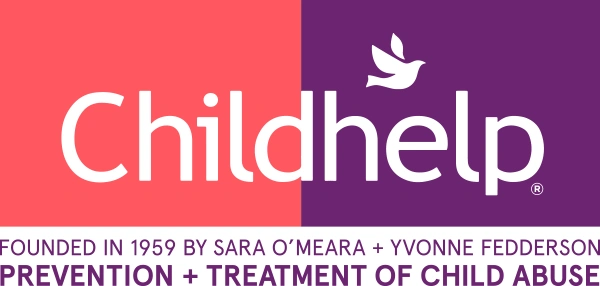Men experience different health risks based on their unique biology and lived experience. This month, health advocacy groups and educators look to public support for men and boys as they learn more about their own bodies and how their choices impact their own health — as well as the health of those who love them.
Every man has his own health priorities, so here are a few broad areas for men and boys to consider as they take charge of their own wellbeing:
Food & Diet
The USDA’s Dietary Guidelines for Americans sketches a few areas of diet to focus on:
- Healthy choices early and often: Healthful diet choices are different at different stages of life, but each stage is an opportunity to learn and practice better choices. Boys who eat healthy become men who eat healthy.
- Choose nutrient-dense foods that work for you: Personal preference, culture, and budget mean that not every healthy plate of food will look the same.
- Keep calorie intake inline with your body’s needs: The habits that shape your life shape your dietary needs too. A variety of nutrient-dense foods and drinks can keep caloric intake right at the level a man needs to thrive.
- Limit added sugars, saturated fat, and sodium; and limit alcoholic beverages: In light of the importance of the right amount of nutrient-dense food, foods with less nutritional benefit should be avoided. Sodium is a part of any diet, but the USDA recommends less than 2,300 milligrams per day — and even less for boys younger than 14.
Exercise
The Office for Disease Prevention and Health Promotion offers its own set of guidelines for healthy activity. The general aim is to encourage men to move more and sit less! Any level of activity — moderate or vigorous — offers health benefits. The amount, intensity, and frequency depends on a lot of factors.
- Preschool-aged boys: Physical activity should be encouraged in a variety of play to stay physically active through the day.
- Boys and young men: Shoot for 60 minutes of exercise a day at a minimum, most of which in aerobic exercise, with some bone-strengthening and muscle-strengthening activity.
- Men: Getting in more than300 minutes a week offers many benefits to men’s health. Realistically, however, even 150 minutes a week of moderate-intensity exercise results in significant health improvements. Try to spread aerobic physical activity throughout the week, and work to strengthen muscles on two or more days each week.
- Older Men: Add balance exercises into the routine, but know the impact of chronic conditions on your abilities, and get yourself moving however your fitness allows.
- Men with disabilities: A disability or chronic condition might cut into the amount, intensity and frequency of a man’s exercise routine, but adequate physical activity helps men head off risks that often come along with disabilities.
- “START SLOW AND GROW”: Match your activity to your fitness level, and learn more about the risks and benefits of the physical activities you prefer. Get the right gear and go somewhere safe to exercise, and talk to your doctor about exercise routines, especially if you have a chronic disease or disability.
Regular Checkups
The CDC recommends baby boys go to the doctor or nurse for a “well-baby visit” six times before their first birthday, seven times between ages one and four, and once a year thereafter until age 17.
For adult men, recommendations change depending on the health needs of the patient, but men over 50 should certainly see a doctor at least once a year to stay on top of vaccinations and recommended health screenings. Routine health screenings include keeping an eye on your overall health through adulthood, but there are some notable areas where regular doctor visits become more and more important, especially for men:
- Prostate cancer screenings can start as young as 40 for high-risk patients. The American Cancer Society recommends African American men talk to their doctors about the screening at 45, and all men age 50 and above talk to their doctor about it. The screening isn’t right for all men, so talk to your doctor.
- Testicular cancer screening, according to the ACS, testicular cancer screening should be a part of routine check-ups, but all men should examine their testicles monthly after puberty (see link for instructions, gents).
- Colorectal cancer screening for all men aged 50 and up is recommended by the American Cancer Society.
Stop smoking
According to the American Lung Association, quitting smoking can have immediate benefits, and abstaining from nicotine has benefits that extend across a lifetime, lowering risk of heart disease, lung disease and other smoking-related illnesses like lung cancer, the leading cause of cancer deaths among both men and women.
It can be difficult to know how to start making long-term changes for a healthy lifetime, but every step forward helps. Visit smokefree.gov for more.
Prioritize mental health
According to the National Institute of Mental Health, the suicide rate among men in 2019 was 3.7 times higher than among women, with rates highest for men 75 and older. Further, according to NIMH, men are more likely than women to use almost all types of illicit drugs. However, men with mental illnesses are also less likely to have received mental health treatment than women in the past year.
According to the Substance Abuse and Mental Health Services Administration, regardless of age or race, men use alcohol and drugs more frequently and in greater quantities than women too.
Men should understand their mental and behavioral health as a part of their overall health picture, and feel free to talk about emotional wellness with their doctor. Reducing stress, nurturing healthy relationships, and practicing healthy coping skills are all good foundations.
Men and women can develop most of the same mental disorders and conditions but may experience different symptoms. Here are some symptoms NIMH suggests men keep an eye out for:
- Anger, irritability, or aggressiveness
- Noticeable changes in mood, energy level, or appetite
- Difficulty sleeping or sleeping too much
- Difficulty concentrating, feeling restless, or on edge
- Increased worry or feeling stressed
- Misuse of alcohol and/or drugs
- Sadness or hopelessness
- Suicidal thoughts
- Feeling flat or having trouble feeling positive emotions
- Engaging in high-risk activities
- Aches, headaches, digestive problems without a clear cause
- Obsessive thinking or compulsive behavior
- Thoughts or behaviors that interfere with work, family, or social life
- Unusual thinking or behaviors that concern other people
If you aren’t sure who to talk to, you can always call or text the Childhelp National Child Abuse Hotline at 1-800-4-CHILD, or start a chat at childhelphotline.org.



